Related Research Articles

The history of mathematics deals with the origin of discoveries in mathematics and the mathematical methods and notation of the past. Before the modern age and the worldwide spread of knowledge, written examples of new mathematical developments have come to light only in a few locales. From 3000 BC the Mesopotamian states of Sumer, Akkad and Assyria, followed closely by Ancient Egypt and the Levantine state of Ebla began using arithmetic, algebra and geometry for purposes of taxation, commerce, trade and also in the field of astronomy to record time and formulate calendars.
Mathematics is a field of study that discovers and organizes methods, theories and theorems that are developed and proved for the needs of empirical sciences and mathematics itself. There are many areas of mathematics, which include number theory, algebra, geometry, analysis, and set theory.

John Playfair FRSE, FRS was a Church of Scotland minister, remembered as a scientist and mathematician, and a professor of natural philosophy at the University of Edinburgh. He is best known for his book Illustrations of the Huttonian Theory of the Earth (1802), which summarised the work of James Hutton. It was through this book that Hutton's principle of uniformitarianism, later taken up by Charles Lyell, first reached a wide audience. Playfair's textbook Elements of Geometry made a brief expression of Euclid's parallel postulate known now as Playfair's axiom.

George Peacock FRS was an English mathematician and Anglican cleric. He founded what has been called the British algebra of logic.
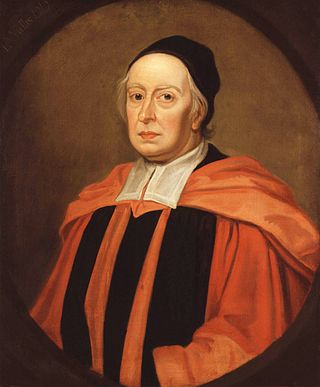
John Wallis was an English clergyman and mathematician, who is given partial credit for the development of infinitesimal calculus.

Nathaniel Bliss was an English astronomer of the 18th century, serving as Britain's fourth Astronomer Royal between 1762 and 1764.

New Mathematics or New Math was a dramatic but temporary change in the way mathematics was taught in American grade schools, and to a lesser extent in European countries and elsewhere, during the 1950s–1970s.
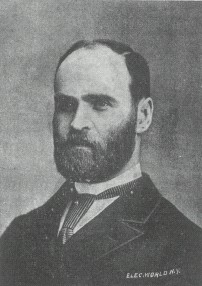
Alexander Macfarlane FRSE LLD was a Scottish logician, physicist, and mathematician.
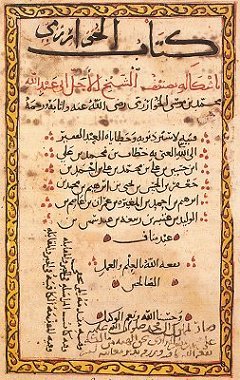
Mathematics during the Golden Age of Islam, especially during the 9th and 10th centuries, was built upon syntheses of Greek mathematics and Indian mathematics. Important developments of the period include extension of the place-value system to include decimal fractions, the systematised study of algebra and advances in geometry and trigonometry.

Augustus De Morgan was a British mathematician and logician. He is best known for De Morgan's laws, relating logical conjunction, disjunction, and negation, and for coining the term "mathematical induction", the underlying principles of which he formalized. De Morgan's contributions to logic are heavily used in many branches of mathematics, including set theory and probability theory, as well as other related fields such as computer science.
The following is a timeline of key developments of geometry:
Elizabeth Tollett was a British poet. Her surviving works are varied; she produced translations of classical themes, religious and philosophical poetry and poems arguing for women's involvement in education and intellectual pursuits such as natural philosophy. Unusually, for a woman of her time, her poetry also includes Newtonian imagery and ideas. Some of her poetry imitates the Latin verse of Horace, Ovid, and Virgil. In some of her poems, Tollett paraphrases the Psalms.
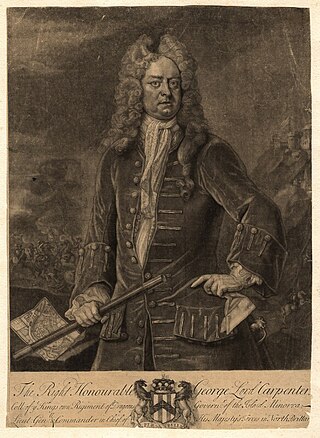
Lieutenant-General George Carpenter, 1st Baron Carpenter was a British Army officer, Whig politician and peer. He served as Commander-in-Chief, Scotland from 1716 to 1724 and as a member of parliament from 1715 to 1727.
John Senex (1678–1740) was an English cartographer, engraver and explorer.
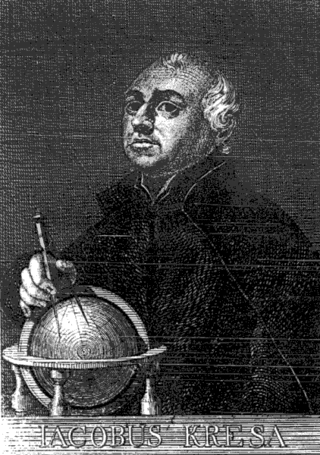
Jakub Kresa was a Czech mathematician. He was one of the most important Czech mathematicians of the Baroque era.
A mathematical exercise is a routine application of algebra or other mathematics to a stated challenge. Mathematics teachers assign mathematical exercises to develop the skills of their students. Early exercises deal with addition, subtraction, multiplication, and division of integers. Extensive courses of exercises in school extend such arithmetic to rational numbers. Various approaches to geometry have based exercises on relations of angles, segments, and triangles. The topic of trigonometry gains many of its exercises from the trigonometric identities. In college mathematics exercises often depend on functions of a real variable or application of theorems. The standard exercises of calculus involve finding derivatives and integrals of specified functions.
John Caswell was an English mathematician who served as Savilian Professor of Astronomy at the University of Oxford from 1709 until his death.
John Radford Young was an English mathematician, professor and author, who was almost entirely self-educated. He was born of humble parents in London. At an early age he became acquainted with Olinthus Gilbert Gregory, who perceived his mathematical ability and assisted him in his studies. In 1823, while working in a private establishment for the deaf, he published An Elementary Treatise on Algebra with a dedication to Gregory. This treatise was followed by a series of elementary works, in which, following in the steps of Robert Woodhouse, Young familiarized English students with continental methods of mathematical analysis.
Robert Baldwin Hayward was an English educator and mathematician.
Jakub Nakcjanowicz or Nakcyanowicz was a Jesuit priest, mathematician, and astronomer of the Polish–Lithuanian Commonwealth. He was the second director of the Vilnius University Astronomical Observatory (1758–1764).
References
- 1 2 Londry, Michael (September 2004). Tollet, George (d. 1719). Vol. Oxford Dictionary of National Biography. Oxford University Press . Retrieved 17 October 2009. (library card access)
- 1 2 Londry, Michael (September 2004). Tollet, Elizabeth (1694–1754). Vol. Oxford Dictionary of National Biography. Oxford University Press . Retrieved 17 October 2009. (library card access)
- ↑ "Royal Society Library and Archive Catalogue". Royal Society. Retrieved 28 October 2010.[ permanent dead link ]
- ↑ Gilbert, J. T. (1859). "IV". History of the City of Dublin. Vol. II. M'Glashan and Gill. ISBN 0-7171-0942-9. Archived from the original on 12 September 2011.
{{cite book}}: CS1 maint: unfit URL (link) "I must confess, we have been lately something idle-and several of our meetings have been employed by a young mathematical female in this place, bred up by one Mr. Tollet, a teacher of mathematics, and a most excellent learned man in that kind. The child is not yet eleven, and yet she hath given sufficient proofs of her learning in arithmetic, the most abstruse parts, algebra, geometry, trigonometry plane and spherical, the doctrine of the globes, chronology, and on the violin plays anything almost at sight. As this is a most plain instance of the force and power of timely education, and of the reach that man has naturally, we have thought it worth our while to consider and examine it thoroughly; and indeed we find, at least, that the child seems to have no more natural inclination or delight in these things than ordinarily amongst children."